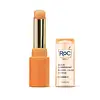What's inside
What's inside
 Key Ingredients
Key Ingredients

 Benefits
Benefits

 Concerns
Concerns

 Ingredients Side-by-side
Ingredients Side-by-side

C13-15 Alkane
SolventWater
Skin ConditioningCocoglycerides
EmollientHelianthus Annuus Seed Wax
Skin ConditioningButylene Glycol
HumectantAcrylates Crosspolymer
AbsorbentPolyhydroxystearic Acid
EmulsifyingTetrahexyldecyl Ascorbate
AntioxidantBis-Behenyl/Isostearyl/Phytosteryl Dimer Dilinoleyl Dimer Dilinoleate
EmollientPolyglyceryl-4 Oleate
EmulsifyingCetearyl Olivate
Polyglyceryl-6 Oleate
EmulsifyingHelianthus Annuus Seed Oil Unsaponifiables
EmollientTroxerutin
Skin ConditioningCalcium Aluminum Borosilicate
Diisostearyl Malate
EmollientGluconolactone
Skin ConditioningSorbitan Olivate
EmulsifyingTocopheryl Acetate
AntioxidantSodium Benzoate
MaskingSodium PCA
HumectantMaltodextrin
AbsorbentCistus Incanus Flower/Leaf/Stem Extract
Skin ConditioningHaematococcus Pluvialis Extract
AntioxidantOctyldodecanol
EmollientCalcium Gluconate
HumectantMalic Acid
BufferingPentaerythrityl Tetraisostearate
EmollientTocopherol
AntioxidantAstaxanthin
Skin ConditioningCaprylic/Capric Triglyceride
MaskingPropylene Carbonate
SolventStearalkonium Hectorite
Gel FormingPalmitoyl Hexapeptide-12
Skin ConditioningCI 77491
Cosmetic ColorantC13-15 Alkane, Water, Cocoglycerides, Helianthus Annuus Seed Wax, Butylene Glycol, Acrylates Crosspolymer, Polyhydroxystearic Acid, Tetrahexyldecyl Ascorbate, Bis-Behenyl/Isostearyl/Phytosteryl Dimer Dilinoleyl Dimer Dilinoleate, Polyglyceryl-4 Oleate, Cetearyl Olivate, Polyglyceryl-6 Oleate, Helianthus Annuus Seed Oil Unsaponifiables, Troxerutin, Calcium Aluminum Borosilicate, Diisostearyl Malate, Gluconolactone, Sorbitan Olivate, Tocopheryl Acetate, Sodium Benzoate, Sodium PCA, Maltodextrin, Cistus Incanus Flower/Leaf/Stem Extract, Haematococcus Pluvialis Extract, Octyldodecanol, Calcium Gluconate, Malic Acid, Pentaerythrityl Tetraisostearate, Tocopherol, Astaxanthin, Caprylic/Capric Triglyceride, Propylene Carbonate, Stearalkonium Hectorite, Palmitoyl Hexapeptide-12, CI 77491
Caprylic/Capric Triglyceride
MaskingWater
Skin ConditioningCera Microcristallina
Emulsion StabilisingSynthetic Wax
AbrasiveC9-12 Alkane
SolventTridecyl Trimellitate
EmollientPropanediol
SolventMica
Cosmetic ColorantPolyglyceryl-3 Diisostearate
EmulsifyingGlycerin
HumectantButylene Glycol
HumectantPolyglyceryl-6 Polyricinoleate
EmulsifyingSodium Chloride
Masking3-O-Ethyl Ascorbic Acid
Skin ConditioningTetrahexyldecyl Ascorbate
AntioxidantCaffeine
Skin ConditioningTocopherol
AntioxidantPoncirus Trifoliata Fruit Extract
Skin ConditioningCitrus Nobilis Fruit Extract
MaskingCitrus Paradisi Peel Extract
PerfumingJojoba Esters
EmollientEthylhexylglycerin
Skin ConditioningSodium Phytate
Polysilicone-11
Phenoxyethanol
PreservativeTin Oxide
AbrasiveIron Oxides
CI 77891
Cosmetic ColorantCaprylic/Capric Triglyceride, Water, Cera Microcristallina, Synthetic Wax, C9-12 Alkane, Tridecyl Trimellitate, Propanediol, Mica, Polyglyceryl-3 Diisostearate, Glycerin, Butylene Glycol, Polyglyceryl-6 Polyricinoleate, Sodium Chloride, 3-O-Ethyl Ascorbic Acid, Tetrahexyldecyl Ascorbate, Caffeine, Tocopherol, Poncirus Trifoliata Fruit Extract, Citrus Nobilis Fruit Extract, Citrus Paradisi Peel Extract, Jojoba Esters, Ethylhexylglycerin, Sodium Phytate, Polysilicone-11, Phenoxyethanol, Tin Oxide, Iron Oxides, CI 77891
 Reviews
Reviews

Alternatives
Ingredients Explained
These ingredients are found in both products.
Ingredients higher up in an ingredient list are typically present in a larger amount.
Butylene Glycol (or BG) is used within cosmetic products for a few different reasons:
Overall, Butylene Glycol is a safe and well-rounded ingredient that works well with other ingredients.
Though this ingredient works well with most skin types, some people with sensitive skin may experience a reaction such as allergic rashes, closed comedones, or itchiness.
Learn more about Butylene GlycolThis ingredient is an emollient, solvent, and texture enhancer. It is considered a skin-softener by helping the skin prevent moisture loss.
It helps thicken a product's formula and makes it easier to spread by dissolving clumping compounds.
Caprylic Triglyceride is made by combining glycerin with coconut oil, forming a clear liquid.
While there is an assumption Caprylic Triglyceride can clog pores due to it being derived from coconut oil, there is no research supporting this.
Learn more about Caprylic/Capric TriglycerideTetrahexyldecyl Ascorbate (THD) is a stable and oil-soluble form of Vitamin C.
THD is special in that it has the ability to travel deeper into skin than traditional ascorbic acid while maintaining the same skin benefits (double win!).
Because it’s oil-soluble, THD dives deep into your skin’s fatty layers (think ceramides and cholesterol) to fight off the kind of free radicals that mess with your skin barrier. This makes it a great pair with water-based vitamin C (ascorbic acid) that mainly works on the surface.
Even at just 0.1%, THD is already showing great antioxidant activity. When used up to 2%, it helps keep your skin happy and calm, especially when it’s stressed from pollution or sun.
Want to fade dark spots or tackle hyperpigmentation? You’ll want 5% or more. Pairing it with brightening buddies like niacinamide or licorice root gives even better results. One study even used 30% THD with other brighteners and saw real results on stubborn discoloration, even in melasma-prone skin.
A note on THD: It’s has a slightly silky, oily texture and usually shows up colorless or pale yellow (though the exact shade can vary by supplier).
While you can sneak it into water-based formulas, it really shines when paired with silicones or oils, which help your skin soak it up better.
THD is pretty stable, but it’s still vulnerable to degradation like ascorbic acid. Too much light or heat (above 113°F / 45°C) can break it down over time. Go for dark and opaque packaging that keeps it safe and shady!
Read more about other types of Vitamin C:
Learn more about Tetrahexyldecyl AscorbateTocopherol (also known as Vitamin E) is a common antioxidant used to help protect the skin from free-radicals and strengthen the skin barrier. It's also fat soluble - this means our skin is great at absorbing it.
Vitamin E also helps keep your natural skin lipids healthy. Your lipid skin barrier naturally consists of lipids, ceramides, and fatty acids. Vitamin E offers extra protection for your skin’s lipid barrier, keeping your skin healthy and nourished.
Another benefit is a bit of UV protection. Vitamin E helps reduce the damage caused by UVB rays. (It should not replace your sunscreen). Combining it with Vitamin C can decrease sunburned cells and hyperpigmentation after UV exposure.
You might have noticed Vitamin E + C often paired together. This is because it is great at stabilizing Vitamin C. Using the two together helps increase the effectiveness of both ingredients.
There are often claims that Vitamin E can reduce/prevent scarring, but these claims haven't been confirmed by scientific research.
Learn more about TocopherolWater. It's the most common cosmetic ingredient of all. You'll usually see it at the top of ingredient lists, meaning that it makes up the largest part of the product.
So why is it so popular? Water most often acts as a solvent - this means that it helps dissolve other ingredients into the formulation.
You'll also recognize water as that liquid we all need to stay alive. If you see this, drink a glass of water. Stay hydrated!
Learn more about Water